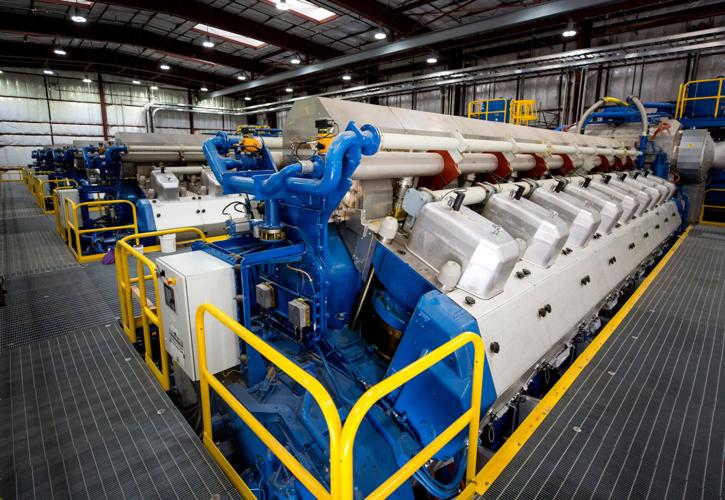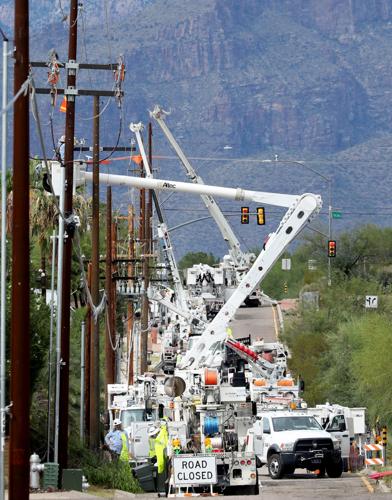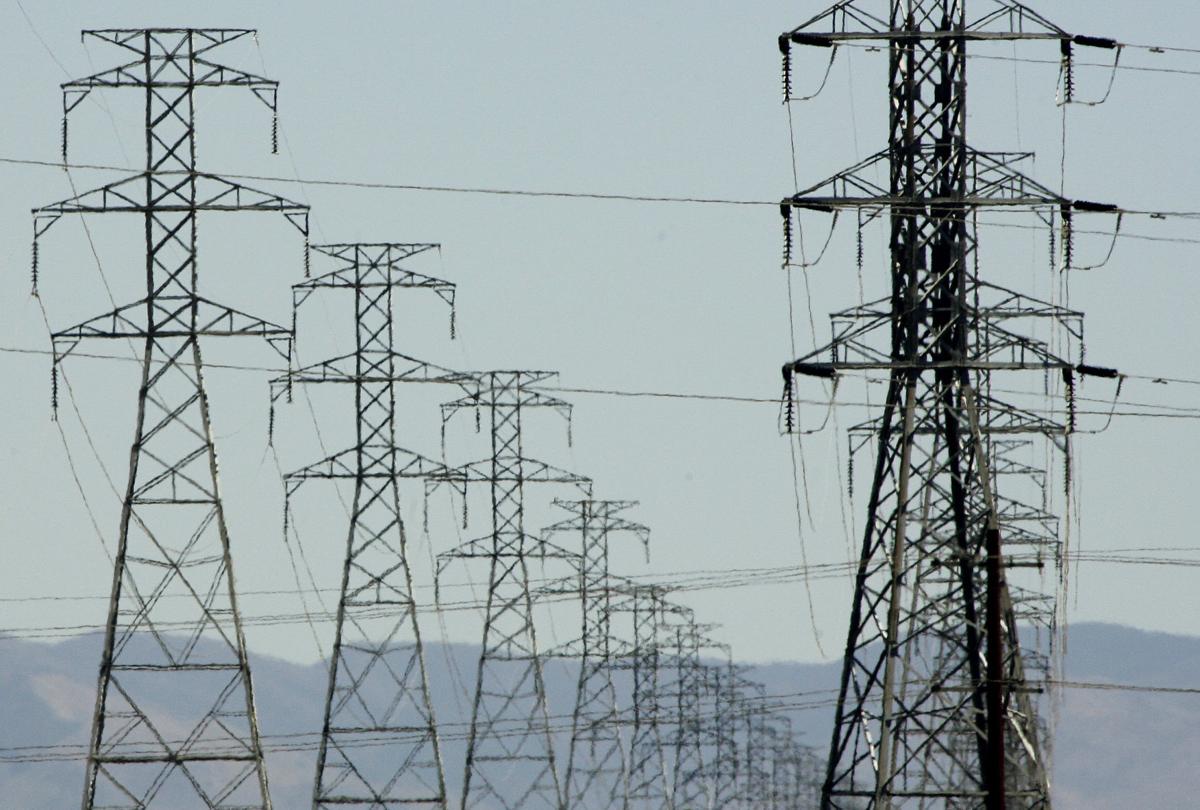Tucson Electric Power and other Arizona power companies say they’re confident they can keep the lights on through the summer despite recent record-setting heat across the West that has prompted rolling blackouts in California and calls to conserve across Arizona.
Careful long-term planning and a mix of generating resources — along with a successful plea to customers to conserve during peak hours — have helped TEP, Arizona Public Service and the state’s rural electric cooperatives to meet customer demand during the record-setting hot spell, executives for the utilities said at a recent Arizona Corporation Commission virtual workshop.
But the utilities said they were concerned about the availability and pricing of wholesale energy, as California snapped up as much power as it could from the Western wholesale power market as it faced shortages in meeting heat-driven demand.
“It gets hot every summer, and there’s often times when we have coincident heat across the Southwest and Southern California,” said David Hutchens, president and CEO of TEP and sister rural utility UniSource Energy Services.
But with significant generating capacity shut down across the Southwest in recent years, there was little margin available for power trading, Hutchens said.
“There was very little excess energy out in the marketplace, and very high prices,” he said.
The shortages prompted California’s main power system operator to call for rolling blackouts across the state Aug. 14 and 15. The state has since managed to avoid imposing blackouts, though other conservation measures remain in place.
TEP, APS, Trico Electric Cooperative and other power providers across the state asked customers to voluntarily curtail power usage from 4 to 8 p.m. on Aug. 18 and Aug. 19.
Keeping the lights on
While investigations are ongoing, experts say California’s energy shortfall was the result of multiple factors, including a failure to plan adequate power supplies to meet peak demand in the late afternoon through early evening, when production from the state’s massive solar energy farms starts to tail off.
Other factors cited so far include the temporary failure of two gas-fired power plants, coincidentally low production from wind farms and the limited availability of supplemental wholesale power from neighboring Western states, which were suffering through the same heat wave.
“That’s where the problem comes, when you have that coincident peak, we don’t have that power to spare,” TEP’s Hutchens said, adding that customers helped by responding to the utility’s conservation request.
Commissioner Lea Marquez Peterson requested the emergency meeting of the ACC to discuss the California energy emergency’s potential impact on Arizona.
“California is a major player in the wholesale market, and I wanted assurance the state would not be impacted and that we had adequate supply to handle the intense heat we are experiencing,” Marquez Peterson said in kicking off the Aug. 21 workshop. “I don’t take lightly the request to turn up Arizonans’ air conditioners further, or the risk of rolling blackouts, during the hottest summer on record in Arizona.”
Commissioner Justin Olson, the only other commissioner attending the Zoom workshop, said he understood from available accounts that California had not adequately provided resources needed just before and after sunset, when demand peaks just as solar production drops with the sun.
“That’s something to keep in mind, we want to increase renewables but in a common-sense fashion that maintains reliable service,” Olson said. “Arizona has done a good job of maintaining that balance.”
Renewables and reliability
TEP’s Hutchens said recent problems in California show the need to continue to focus on system reliability and resources as Arizona considers various new mandates for renewable or carbon-free energy — including a proposal that 50% of the state’s electricity come from renewables by 2030.
Hutchens noted that TEP has its own ambitious clean-energy goals, including an 80% reduction in carbon emissions and 70% renewable energy by 2035, but it will still rely on fast-ramping natural gas generators and, increasingly in the future, energy storage to help meet demand peaks.
“We need a flexible path to those goals to maintain reliable service,” he said.
APS CEO Jeff Guldner said that amid unprecedented demand, many utilities entered some level of power emergency.
“APS avoided any level of emergency, but not by chance,” he said. “Arizona as a state and APS as a utility has been able to keep the lights on due to careful planning.”

Tucson Electric Power units work to replace several utility poles that were damaged by a microburst last year along South Bonanza Avenue, south of East Golf Links Road.
Guldner said customers helped by conserving at APS’ request, as did the utility’s “Cool Rewards” demand-response program, which allows the utility to turn participating customers’ thermostats up a few degrees during demand peaks in exchange for modest bill credits.
Arizona’s rural electric cooperatives were able to weather the effects of the California power emergency on regional supplies, according to the head of the statewide co-op that generates and buys power for the co-ops.
But California’s emergency made it difficult for the co-ops to obtain some power-purchase contract options it had arranged, said Patrick Ledger, CEO of the Arizona’s Generation & Transmission Cooperatives.
“This summer was unique, the peak was a little higher than forecast, and the California emergency order made it more difficult to obtain some call options,” Ledger said. “It did make things more difficult, but we did have an appropriate balance.”
Lack of proper planning
Hutchens said California’s problems should not be blamed on solar, but on a lack of proper planning to address its intermittent nature.
“This is not a hit against solar – it worked exactly like it’s supposed to,” he said. “Everyone knows the sun sets with a striking predictability, it’s the planning process of what you do when that goes away.”
Brad Albert, vice president resource management for APS, agreed.
“I want to be careful not to point the blame on solar resources, which were working as they should, the blame with California was the deficiency of the planning process,” he said.

Tucson Electrical Power Co.’s reciprocating internal combustion engines churn away at the H. Wilson Sundt Generating Station at 420 E. Irvington Road.
Albert said to make full use of solar, it must be paired with other resources, like natural gas generators or storage systems.
He cited APS’s Solana thermal solar energy plant near Gila Bend, which has a capacity of 250 megawatts and, with six hours’ worth of energy stored in a salt solution to produce power at consistent levels until about midnight.
Hutchens said TEP can quickly replace solar power as it drops off with resources including a bank of fast-starting, natural gas reciprocating internal combustion engines TEP installed at the end of last year at the H. Wilson Sundt Generating Station in Tucson, along with a 550-megawatt gas plant near Gila Bend TEP bought last year.
Environmental groups have criticized those recent additions of those gas-burning generators — which are much cleaner than coal but still are powerful generators of climate-warming greenhouse gases — arguing that TEP should have purchased more energy storage instead.
Investing in efficiency
Storage will play an increasing role in TEP’s peak-demand strategy, as it prepares to build a 100-megawatt solar farm and linked 30MW battery storage south of Tucson International Airport.
During the workshop on the California blackouts, Sandy Bahr of the Grand Canyon Chapter of the Sierra Club questioned why the Corporation Commission has allowed APS and TEP to cut some energy-efficiency programs in the past few years.
The state has mandated that regulated utilities achieve savings equal to at least 22% of their retail sales by this year, and the Corporation Commission is reviewing that standard as well.
Bahr said energy-efficiency programs, including rebates for things like efficient air conditioners and variable-speed pool pumps, provide long-term benefits especially to lower-income customers.
“Utilities clearly need to be required to invest in energy efficiency,” Bahr said.






